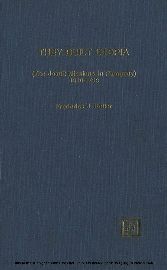Suchen und Finden
Service
They Built Utopia (The Jesuit Missions in Paraguay): 1610-1768
Frederick J. Reiter
Verlag Digitalia, 1995
ISBN 9781882528110 , 429 Seiten
Format PDF, OL
Kopierschutz DRM
INTRODUCTION (p. i)
Mankind`s efforts to create the `Ideal State` always held a special fascination for me. Utopia, by definition, is a visionary`s dream unsuited for reality. Yet when, many years ago, in Rome an old Italian book about the Jesuit Missions in Paraguay fell into my hands I was almost ready to believe that there had been, between 1610 and 1767, a true Utopia in the tropical wilderness of Paraguay.
A cursory check revealed that the book was not fiction but history: a group of Jesuit missions had, through circumstances as unique as extraordinary, grown into an entity, a state within the state, where more than a hundred thousand Guaraní Indians, guided by a handful of the Fathers, led productive lives as free men, deeply religious Christians and proud subjects of the King of Spain.
Since then I have been dedicated to that story and the many years of research have been richly rewarding. Much to my surprise I found that no American historian had been attracted to the subject and even the many thousands of pages written about it by Latin American, Spanish, and other European historians do not tell the whole of the story, either because they are dealing with a limited aspect or period or, in the case of the Jesuit writers, because the Expulsion Decree of 1767 enforced their silence.
So it seems appropriate to give a brief description of the geographical and political circumstances prevailing at the origin of the missions. Paraguay, at the end of the 16th century, was a vast province comprising the southern half of the continent from the border of Peru to the tip of Patagonia.
Up north, Mexico and Peru were rich and productive vice-royalties, but Paraguay was an empty wilderness, the few settlements little more than primitively fortified villages isolated from one another by huge distances. Buenos Aires, settled briefly in 1535, had to be abandoned as indefensible and, settled again in 1580, had no port and just a few hundred souls between Spaniards and mestizos.
The conquistadors who had to abandon it in 1535 sailed up the Paraná and Paraguay rivers and founded Asuncion at a protective bend of the river, it became the capital of the province and boasted about 200 colonists.
The country belonged to the Indians, mostly Guaraníes, split into countless tribes, each headed by its cacique. They were savage nomads, fiercely hostile against the intruders. Those closest to the settlements were subdued, the men serving as the labor force and the women producing the first generation of the rapidly multiplying mestizo population.
Armed conquest of the interior was obviously beyond the colonists` strength. It was the heroic effort of a handful of Jesuit missionaries from Peru and Brazil who began, alone and unaided, the `conquista espiritual`, the spiritual conquest of the Guaraníes which opened the path into the interior.
They went from tribe to tribe, living with the Indians and learning their language, suffering hunger and sickness with them, --he first white men who came unarmed and in peace without demanding anything. The Guaraní.es began to trust them and listened when they spoke about Jesus Christ and the Faith.



